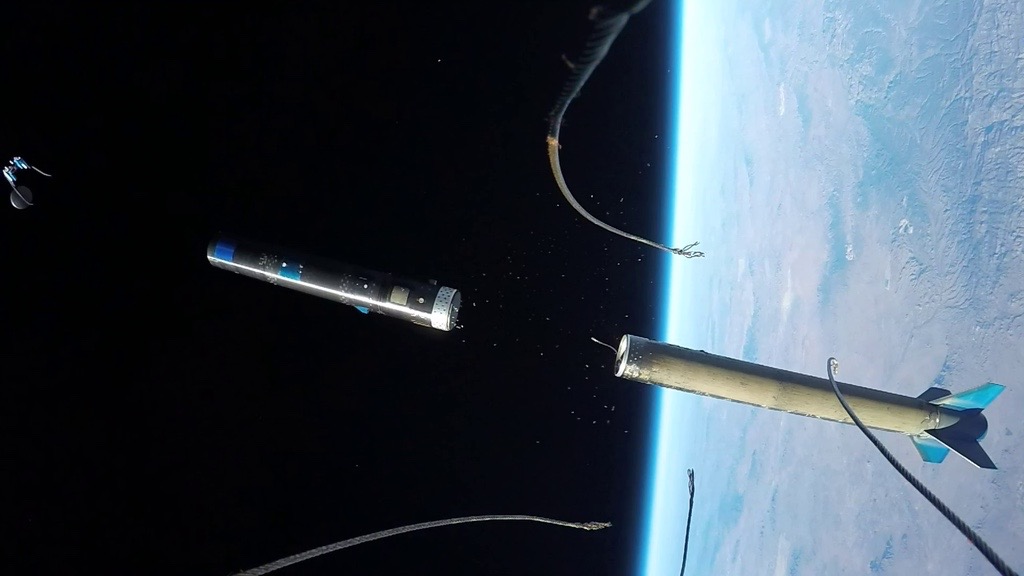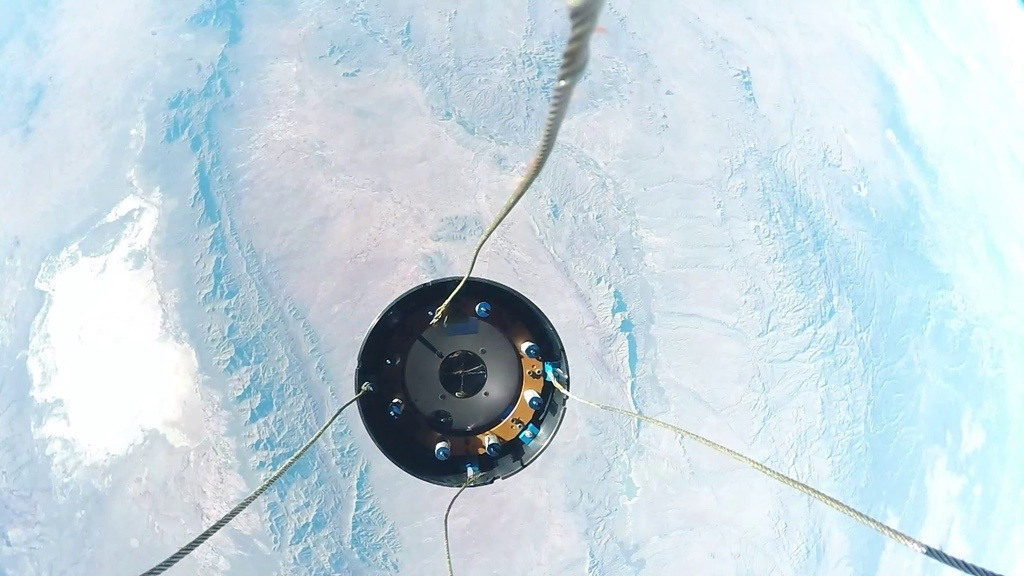Wow! Spectacular Video Shows Test Launch of New Earth-Return Capsule

A small rocket carried four technology experiments to suborbital space last month, and onboard cameras captured the flight in breathtaking detail.
The rocket, built by Denver-based UP Aerospace, launched Sunday (Nov. 6) from Spaceport America in New Mexico carrying four separate payloads, including a capsule called Maraia that NASA is developing to return science gear from the International Space Station to Earth. You can watch an amazing video of the rocket launch and Maraia deployment, courtesy of UP Aerospace.
The video includes footage of the rocket — which reached a maximum altitude of 75 miles (120 kilometers) — separating from the Maraia capsule, and then the capsule returning to Earth. The cameras were mounted on the launch vehicle and in the rocket's nose fairing. [Photos: NASA's Amazing Small Rocket Launches of 2015]

The flight demonstrated that UP Aerospace's rocket can eject separate payloads and have them soft-land back on Earth using parachutes, NASA officials said. This capability is an important part of making future launch systems more reusable, they added. (The tests were funded via NASA's Flight Opportunities Program.)
The rocket's other payloads, in addition to Maraia, included the Affordable Vehicle Avionics project. This effort, which is led by NASA's Ames Research Center in Moffett Field, California, aims to verify that new spacecraft-control systems work as advertised. The plan is to adapt the new systems to tiny space vehicles such as cubesats, resulting in big cost savings, NASA officials said.
A team from Purdue University also tested a new "green" propellant on the Nov. 6 flight. The rocket industry is interested in using less toxic alternatives to conventional fuels such as hydrazine, and the Purdue researchers captured video of their fuel to see how it behaves in the near-weightless environment of space.

Meanwhile, New Mexico State University scientists ran a test of an algorithm in near-zero gravity that will help onboard computers judge how to optimize fuel usage depending on a spacecraft's mass in space.
Get the Space.com Newsletter
Breaking space news, the latest updates on rocket launches, skywatching events and more!
"We had a great launch; all the payloads were exposed to the relevant environments that the researchers were seeking," Paul De Leon, NASA Flight Opportunities Program campaign manager, said in a statement. "The new payload deployment capability from UP Aerospace was successfully demonstrated, opening the opportunity for future entry, descent and landing technologies to be tested and matured under Flight Opportunities."
The Flight Opportunities Program funds private-sector development of new space technologies, by paying for some of the launch costs.
You can Follow Jesse Empsak @Mad_Science_Guy. Follow us @Spacedotcom, Facebook or Google+. Originally published on Space.com.
Join our Space Forums to keep talking space on the latest missions, night sky and more! And if you have a news tip, correction or comment, let us know at: community@space.com.

Jesse Emspak is a freelance journalist who has contributed to several publications, including Space.com, Scientific American, New Scientist, Smithsonian.com and Undark. He focuses on physics and cool technologies but has been known to write about the odder stories of human health and science as it relates to culture. Jesse has a Master of Arts from the University of California, Berkeley School of Journalism, and a Bachelor of Arts from the University of Rochester. Jesse spent years covering finance and cut his teeth at local newspapers, working local politics and police beats. Jesse likes to stay active and holds a fourth degree black belt in Karate, which just means he now knows how much he has to learn and the importance of good teaching.









